
How to Use ANALOG INPUTS TO RS-485 : Examples, Pinouts, and Specs
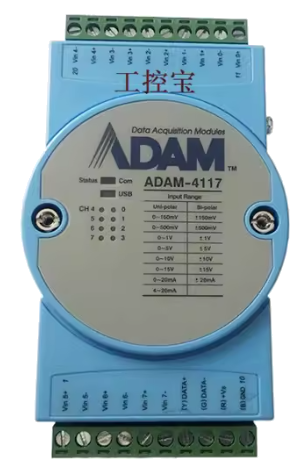
 Design with ANALOG INPUTS TO RS-485 in Cirkit Designer
Design with ANALOG INPUTS TO RS-485 in Cirkit DesignerIntroduction
The ADAM-4117, manufactured by NI National Instrument, is a versatile analog-to-digital signal conversion module. It is designed to convert analog signals into a digital format suitable for transmission over RS-485 communication lines. This component is widely used in industrial environments for long-distance data acquisition and monitoring.
Explore Projects Built with ANALOG INPUTS TO RS-485
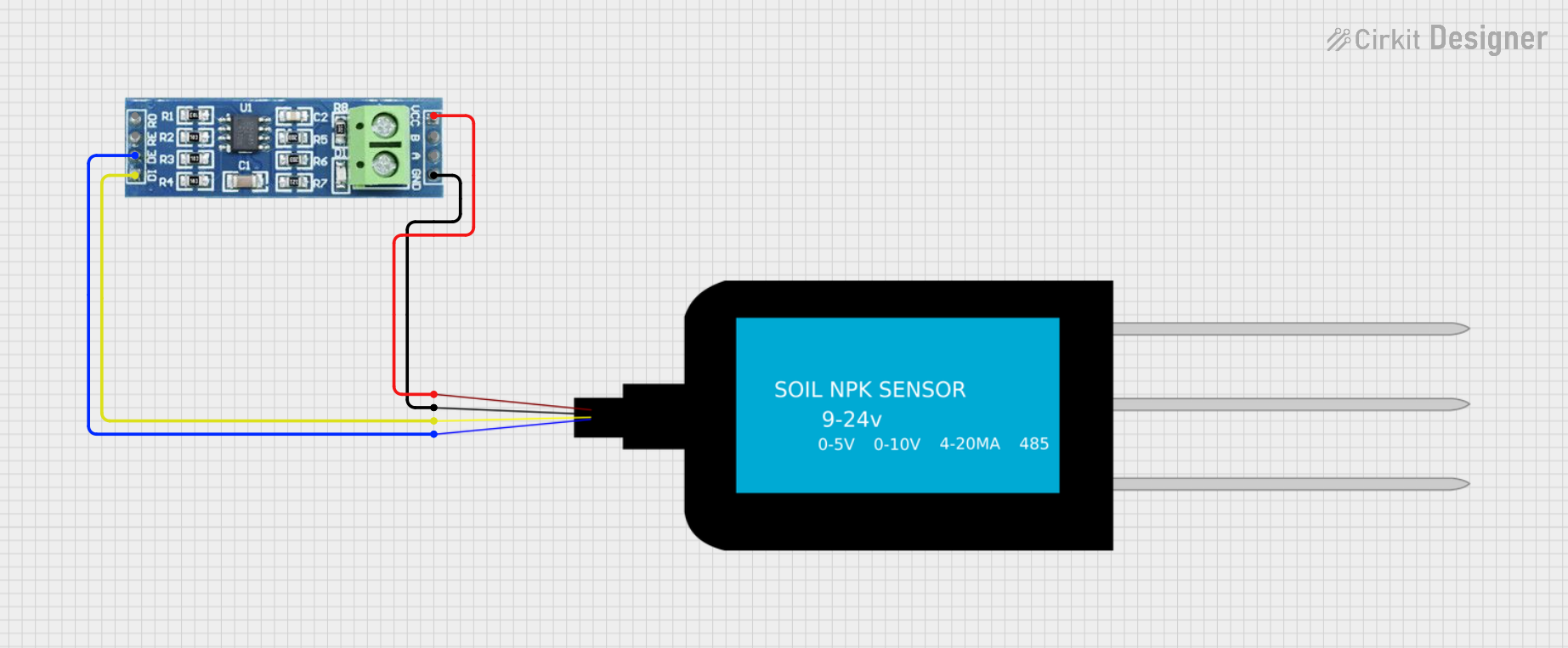
 Open Project in Cirkit Designer
Open Project in Cirkit Designer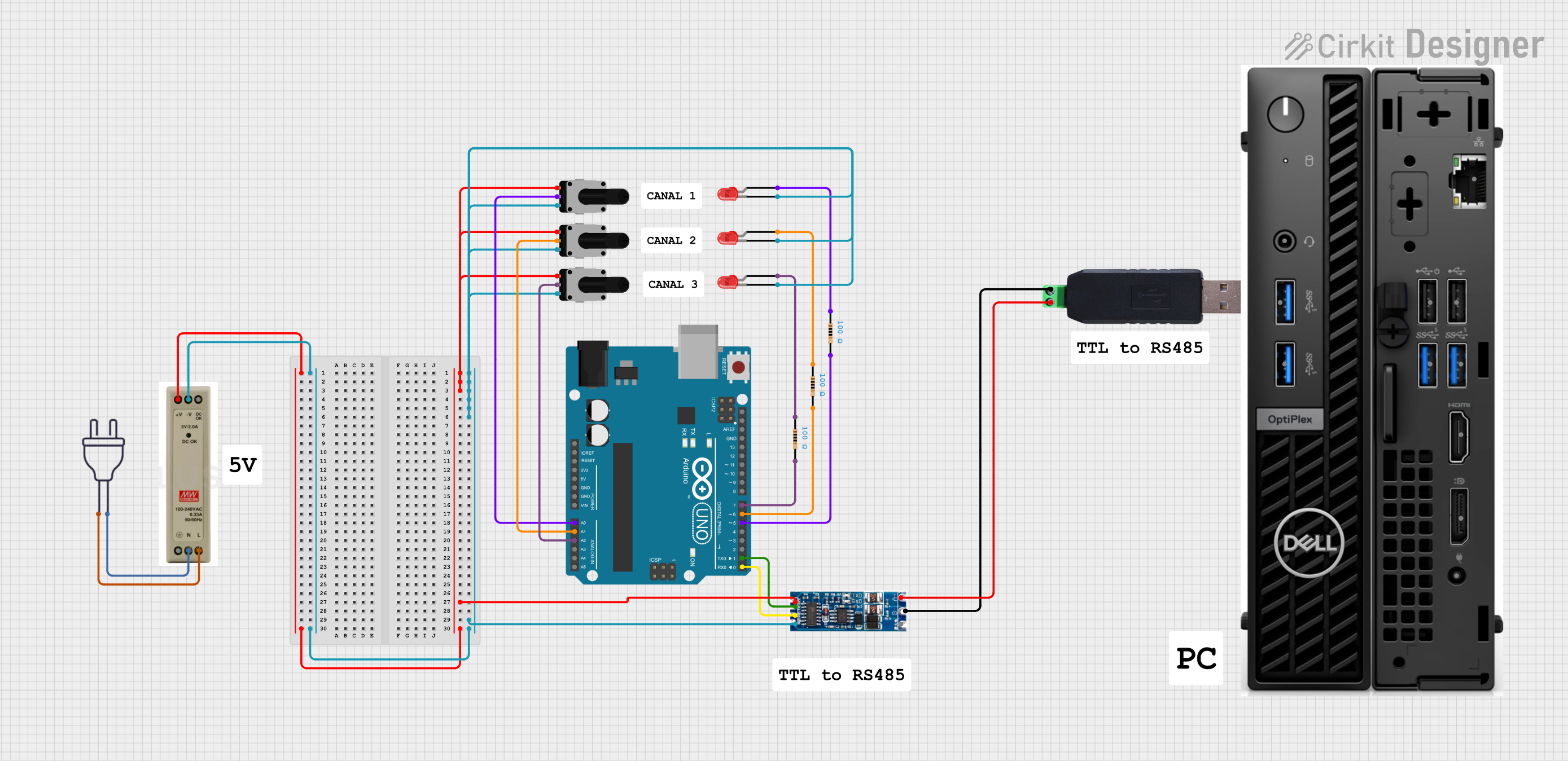
 Open Project in Cirkit Designer
Open Project in Cirkit Designer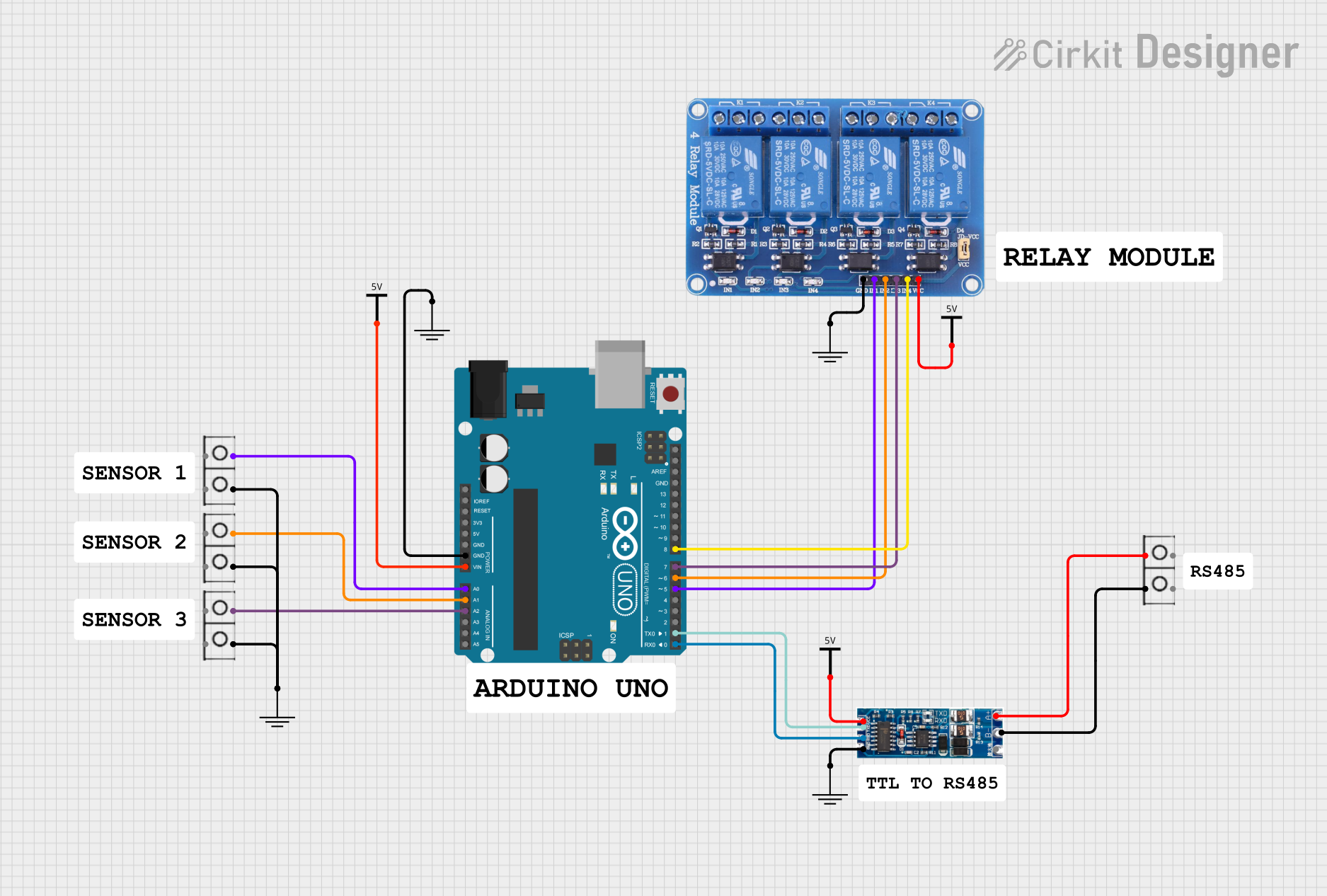
 Open Project in Cirkit Designer
Open Project in Cirkit Designer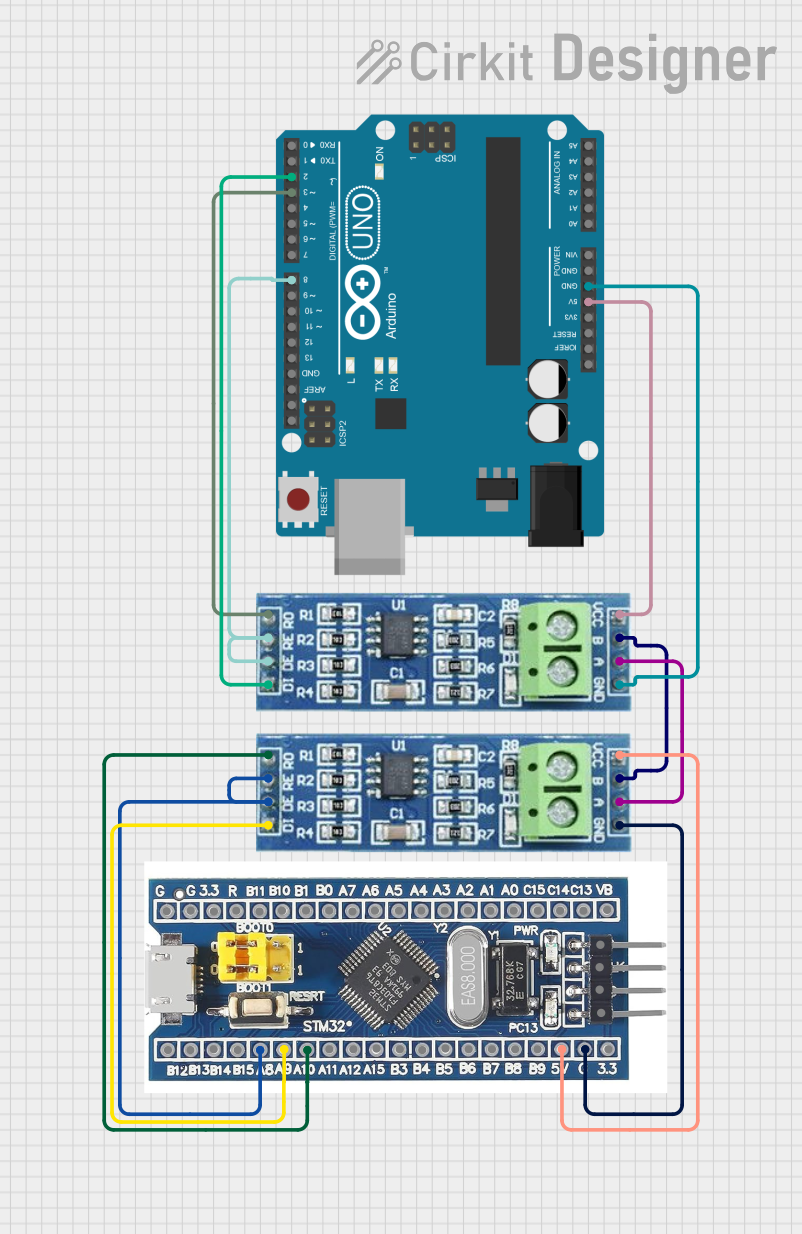
 Open Project in Cirkit Designer
Open Project in Cirkit DesignerExplore Projects Built with ANALOG INPUTS TO RS-485

 Open Project in Cirkit Designer
Open Project in Cirkit Designer
 Open Project in Cirkit Designer
Open Project in Cirkit Designer
 Open Project in Cirkit Designer
Open Project in Cirkit Designer
 Open Project in Cirkit Designer
Open Project in Cirkit DesignerCommon Applications and Use Cases
- Industrial automation and process control
- Remote data acquisition systems
- Environmental monitoring
- Factory equipment monitoring
- SCADA (Supervisory Control and Data Acquisition) systems
The ADAM-4117 is particularly valued for its ability to handle multiple analog input channels and transmit data reliably over long distances using the RS-485 protocol.
Technical Specifications
Key Technical Details
- Manufacturer: NI National Instrument
- Part ID: ADAM-4117
- Input Channels: 8 differential analog input channels
- Input Range: ±10V, ±5V, ±1V, ±500mV (software configurable)
- Resolution: 16-bit
- Communication Protocol: RS-485
- Baud Rate: 1,200 to 115,200 bps
- Power Supply: 10 to 30 VDC
- Isolation Voltage: 3,000 VDC
- Operating Temperature: -10°C to 70°C
- Accuracy: ±0.1% of full scale
Pin Configuration and Descriptions
The ADAM-4117 module features a terminal block for wiring connections. Below is the pin configuration:
| Pin Number | Pin Name | Description |
|---|---|---|
| 1 | AI0+ | Positive input for analog channel 0 |
| 2 | AI0- | Negative input for analog channel 0 |
| 3 | AI1+ | Positive input for analog channel 1 |
| 4 | AI1- | Negative input for analog channel 1 |
| 5 | AI2+ | Positive input for analog channel 2 |
| 6 | AI2- | Negative input for analog channel 2 |
| 7 | AI3+ | Positive input for analog channel 3 |
| 8 | AI3- | Negative input for analog channel 3 |
| 9 | AI4+ | Positive input for analog channel 4 |
| 10 | AI4- | Negative input for analog channel 4 |
| 11 | AI5+ | Positive input for analog channel 5 |
| 12 | AI5- | Negative input for analog channel 5 |
| 13 | AI6+ | Positive input for analog channel 6 |
| 14 | AI6- | Negative input for analog channel 6 |
| 15 | AI7+ | Positive input for analog channel 7 |
| 16 | AI7- | Negative input for analog channel 7 |
| 17 | GND | Ground |
| 18 | +V | Power supply input (10-30 VDC) |
| 19 | DATA+ | RS-485 data line (positive) |
| 20 | DATA- | RS-485 data line (negative) |
Usage Instructions
How to Use the Component in a Circuit
- Power Supply: Connect a DC power supply (10-30 VDC) to the
+VandGNDpins. - Analog Inputs: Wire the analog sensors or devices to the appropriate
AI+andAI-pins for each channel. - RS-485 Communication: Connect the
DATA+andDATA-pins to the RS-485 network. - Configuration: Use the provided software or commands to configure the input range, baud rate, and other parameters.
- Data Acquisition: Once configured, the module will continuously convert analog signals to digital data and transmit it over the RS-485 network.
Important Considerations and Best Practices
- Ensure proper grounding to avoid noise interference in analog signals.
- Use shielded cables for analog inputs to minimize electromagnetic interference (EMI).
- Match the baud rate and communication settings of the ADAM-4117 with the RS-485 master device.
- Terminate the RS-485 network with a 120-ohm resistor at both ends to prevent signal reflections.
- Avoid exceeding the input voltage range to prevent damage to the module.
Example Code for Arduino UNO
The ADAM-4117 can be interfaced with an Arduino UNO using an RS-485 module. Below is an example code snippet:
#include <SoftwareSerial.h>
// Define RS-485 communication pins
#define RS485_RX 10 // Arduino pin connected to RS-485 module RX
#define RS485_TX 11 // Arduino pin connected to RS-485 module TX
// Create a SoftwareSerial object for RS-485 communication
SoftwareSerial rs485(RS485_RX, RS485_TX);
void setup() {
// Initialize serial communication
Serial.begin(9600); // For debugging via Serial Monitor
rs485.begin(9600); // RS-485 communication baud rate
// Send initialization command to ADAM-4117
rs485.print("#01\r"); // Example command to read data from channel 1
delay(100);
}
void loop() {
// Check if data is available from ADAM-4117
if (rs485.available()) {
String data = "";
while (rs485.available()) {
char c = rs485.read();
data += c;
}
// Print received data to Serial Monitor
Serial.println("Received Data: " + data);
}
}
Note: Replace
#01\rwith the appropriate command for your application. Refer to the ADAM-4117 command set for details.
Troubleshooting and FAQs
Common Issues and Solutions
No Data Received
- Cause: Incorrect baud rate or communication settings.
- Solution: Verify and match the baud rate and settings between the ADAM-4117 and the RS-485 master device.
Analog Input Readings Are Incorrect
- Cause: Input voltage exceeds the configured range or improper wiring.
- Solution: Check the input voltage range and ensure proper wiring of the analog inputs.
RS-485 Communication Fails
- Cause: Missing termination resistors or incorrect wiring.
- Solution: Add 120-ohm termination resistors at both ends of the RS-485 network and verify wiring.
Module Overheating
- Cause: Power supply voltage exceeds the specified range.
- Solution: Ensure the power supply voltage is within 10-30 VDC.
FAQs
Q: Can the ADAM-4117 handle single-ended inputs?
A: No, the ADAM-4117 is designed for differential input signals only.Q: What is the maximum cable length for RS-485 communication?
A: RS-485 supports cable lengths up to 1,200 meters (4,000 feet) at lower baud rates.Q: How many ADAM-4117 modules can be connected on the same RS-485 network?
A: Up to 32 devices can be connected on a single RS-485 network without repeaters.Q: Is the module compatible with Modbus protocol?
A: Yes, the ADAM-4117 supports Modbus/RTU communication.
By following this documentation, users can effectively integrate the ADAM-4117 into their industrial systems for reliable and accurate data acquisition.